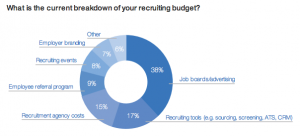At Newfronts this year, presenters on every stage in Manhattan have declared that the golden age of digital video has arrived. The numbers are clear: Viewership is up by more than 53 percent, and global ad-supported video platforms like YouTube, Facebook, Twitter and Snapchat are all experiencing massive growth.
Out of these options (and more that are emerging seemingly every other day), only one — yes, one of these platforms — is poised to become what I am calling the Global Everything Network.
The fact that viewers are flocking to digital video platforms for content is not — as the most optimistic television executive might have hoped — an addition to the traditional “broadcast” viewing habits of a new generation, but a replacement. According to Nielsen, TV viewership among millennials dropped by nearly 11 percent between last September and this past January alone. It would appear that a choice is being made and traditional TV is quite simply losing viewers to digital video.
Of course, within the field of digital video itself, competition among the platforms is growing, too. Many of the platforms offer the same type of video content from media companies such as Vice Media, Tastemade, Warner Music and BuzzFeed, to name a few. But again, even with an overlap in programming, only one of these platforms will merit the title of the Global Everything Network.
Facebook video, along with Twitter’s recently launched Periscope video product, offers the power of “news feed viewing,” which is an experience that most resembles scrolling through the old TV channel guide with your remote, only better.
In Facebook’s feed, the video auto-plays without sound, and with a simple click (or thumb swipe on mobile), the full video plays with sound. Voila: Programming brought to you without interruption right to your News Feed. Is it any wonder that Facebook’s 1.4 billion users are watching 3.5 billion videos per day?
Of course, Twitter has followed suit, testing an auto-play video feature of its own.
Snapchat’s new Discovery product brings the “tune-in” TV experience to a younger generation with the platform’s ability to hyper-engage with viewers who know the content they are watching will soon disappear. To an older generation, this recalls the time before digital-video recorders, when you actually had to be home in time to watch your favorite show, or hit record on your VCR. To the on-demand generation, Snapchat’s unique viewing experience is flat-out addictive. Currently, Snapchat offers content from 11 media companies, including CNN, Yahoo and Warner Music.
And then there’s YouTube. Following its inception, YouTube became most famous for its videos featuring dogs on skateboards and all varieties of cat videos. Over the past few years, YouTube has successfully begun to market itself beyond this outdated, narrow view of the platform.
This time last year at the Newfronts, a campaign was launched in New York, Los Angeles and Chicago to showcase to advertisers some of the new stars who have emerged on YouTube, including Bethany Mota, Michelle Phan and chef vlogger Rosanna Pansino. These personalities were already well-established stars within the millennial crowd.
At this year’s YouTube Brandcast event, attendees were reminded of a recent Variety study reporting that among teenagers (aged 13 through 18), YouTube stars were far more famous than mainstream celebrities.
So much attention has been showered on these new video stars and their massive audiences that Vessel (a potential YouTube competitor with a subscription model) has been attempting to woo (with large advances in exchange for temporary exclusivity) some of the biggest YouTube creators over to its newly launched venture.
However, YouTube is the only digital video service poised to become the Global Everything Network because it’s not about big stars — it’s about breadth and depth of content.
The single-most-telling statistic that speaks to the real power of YouTube is that every 60 seconds, 300 hours of video are uploaded to YouTube. Think about that for more than just a moment. Google’s Neal Mohan put it best: “There is more content being created and uploaded to YouTube in one day than has been created by the three major networks (CBS, NBC, ABC) over the past five years combined.”
And the variety of content on the platform is unparalleled to anything we’ve seen on any medium in history. When you add in the fact that about 60 percent of a creator’s views comes from outside of their home country (or that YouTube is localized in 73 countries and available in 61 languages), the “global” part of this network I’m describing begins to reveal itself.
One clear signal that consumers already understand the enormous breadth of content on YouTube is that the platform is the second-largest search engine in the world. Practically every topic or category you can imagine is suddenly available to watch after a few keystrokes, and that is the way a majority of the site’s billion viewers have navigated content on the platform. This robust search technology — along with an improved “related videos” algorithm that offers up a post video wall of relevant videos from anywhere on the platform (not just the channel a viewer was watching) — speaks to the fact that no one channel can really be called a network when compared to the platform itself. YouTube is the network.
For instance, look at Discovery Channel and its automotive programming — with shows like Fast N Loud, Rods N Wheels and Street Outlaws — and compare that to the tens of thousands of on-demand hours of auto content on YouTube. Because the content is so vast, I’ve grouped a small sampling of the Automotive BrandID Choice content under a few select categories below.
- Car Vlogs (5,410 videos)*
- Car Collections (186)
- Classic Cars (230,577)
- Mods, DIY, Car Care Tips and How-To’s (69,917)
- Road Trips (3,900)
- Racing Cars (28,181)
- Monster Trucks (34,371)
- Motocross (47,331)
- Drifting (20,196)
- Drag Racing (11,962)
- Driving Fails (3,563)
*Zefr’s BrandID technology categorizes all of YouTube’s content to make it possible to navigate this enormous, expanding universe of digital video content for brands and advertisers. This content, which represents the best content for brands amidst the breadth and depth of YouTube, is called Zefr’s BrandID Choice.
Some argue that the oversupply of video content will eventually be the downfall of YouTube. How could the expenses surrounding this massive amount of content being hosted and streamed to every corner of the world ever become fully profitable from advertising alone? If the video content was all similar in nature, that might be true, but YouTube’s vastness is actually its saving grace, not its death knell. It’s the content equivalent of every channel on cable in this country multiplied by every channel on cable in every other country multiplied by 10.
The worldwide advertising television market is $ 160 billion annually. A portion of that spend would make YouTube more than just profitable — it would make it a growth business for Google, leaving every other online video business in the dust. That is the power of the Global Everything Network.
Featured image via Mark Sebastian.
(194)




